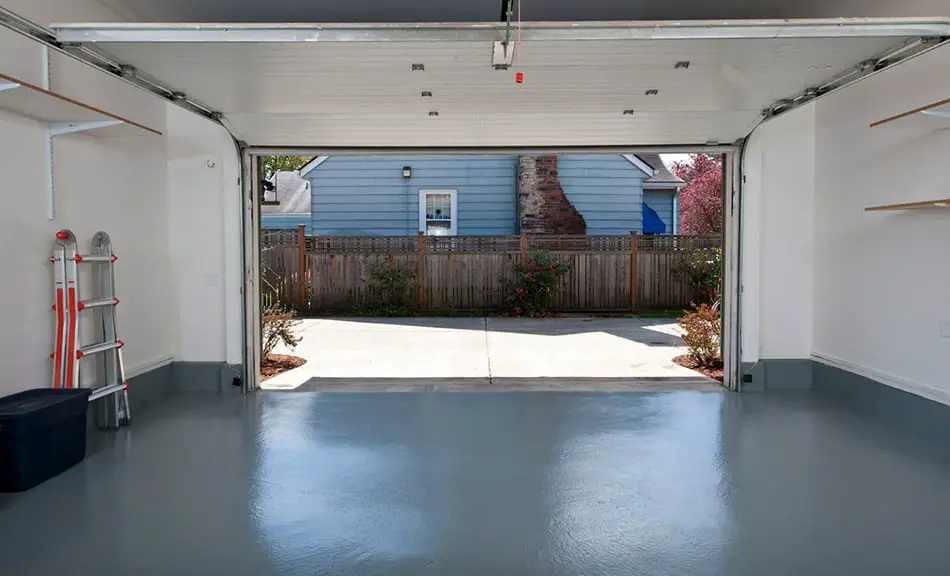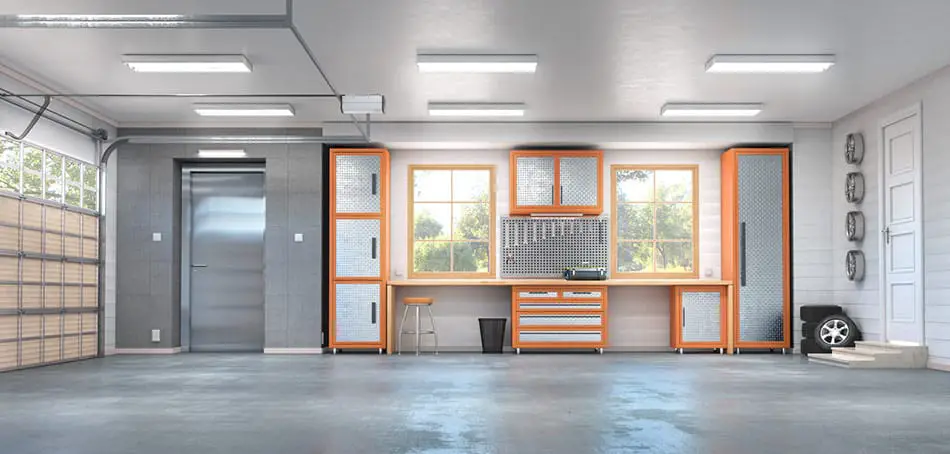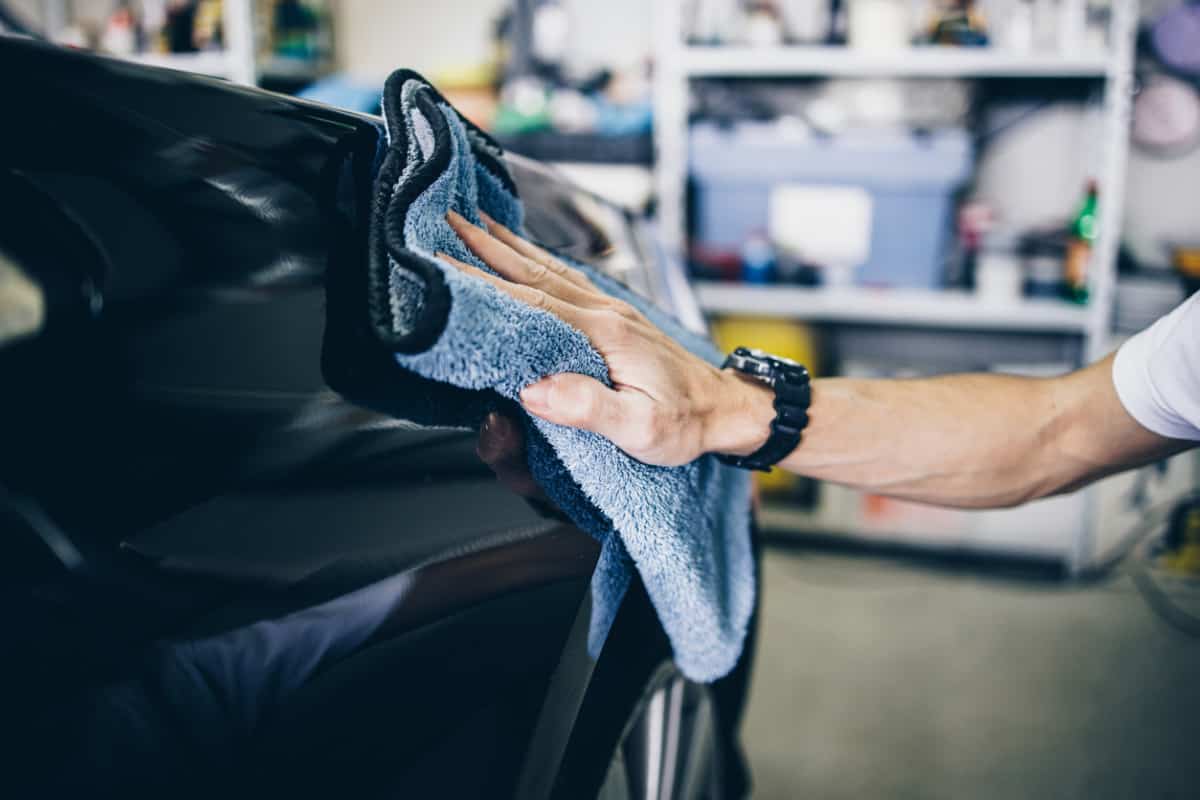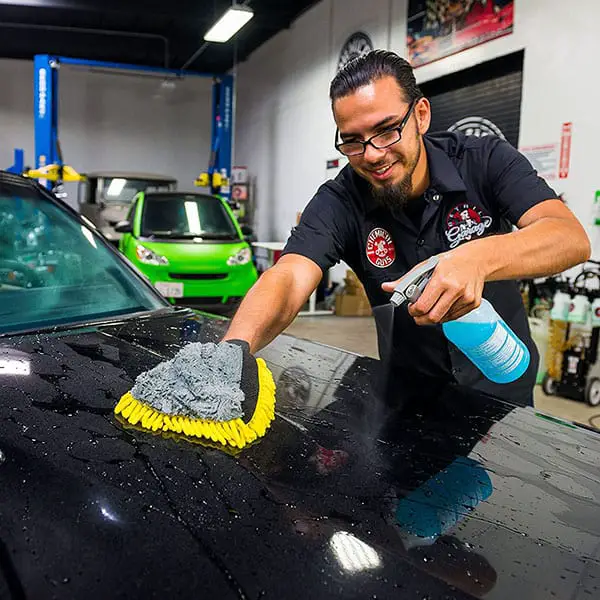If you have space, washing your car in the garage is an easy way to clean your car’s exterior, despite the elements outdoors. Rain or shine, if you have the room and the right tools, washing your car in the garage is a great option.
When washing your car in the garage, the name of the game is preparation. To make your car washing experience progress smoothly and painlessly, you need to prepare by taking purposeful steps before you even get started.
1. Choose a Car Washing Method That’s Right for You
In case you weren’t aware, there are multiple ways to wash a car in a garage, including:
- The two-bucket car wash (for garages with drains)
- The rinse-free car wash (for any garage)
- The low water car wash (for any garage)
Let’s look into each of these car washing methods in detail. Once you know the ins and outs of each of the methods, you can choose the best car washing method for you and your garage.
The Two Bucket Car Wash
To wash your car in the garage safely, you’ll want to avoid using high-pressure water tools that you would generally use outside, like hose attachments. But don’t worry, you’ll still be able to get a good clean.
For the two bucket car wash, you will need:
- A bucket with soapy water
- A bucket for rinsing
- Microfiber towels
- Drying towels
- A sponge or mitt for washing
How to Make Your Soap Solution
To make the soapy solution, you will need to mix ¼ cup of baking soda with ¼ cup of dishwashing liquid and about a gallon of water (or enough water to fill the bucket). It’s essential to add the baking soda to the bucket first, then the dishwashing liquid, then the water (in that order). Then you will mix the solution until it begins to make your fingers feel slippery.
Buy Ready-to-Use Car Wash Soap
If you aren’t too keen on going the DIY soap-making route, you can buy your car washing soap from the store. There are tons of brands and types of car washing soap, but one that has customers raving is Mothers 05632 California Gold Car Wash Soap (link to Amazon). This soap was formulated to be tough on stains, bird droppings, dirt, and other hard-to-clean offenders. Yet, it is gentle enough to leave your car’s protective wax intact and paint lustrous.
Start Washing Your Car
After your soapy solution is made (or bought and ready for use), it’s time to get started washing your car.
Here are the steps of the two-bucket car wash method:
- Give your car a rinse before you begin washing it. Use your bucket of water to rinse it from top to bottom.
- Using the soap bucket, load a sponge up with the soap solution, and wipe down your car thoroughly.
- Use the bucket with water only to help rinse away the soap. You can use a hose (without a high-pressure attachment) to refill the buckets as needed, but if your garage doesn’t have a drain, you want to limit the amount of water you use to wash your car. Use your judgment.
- Dry your car with a terry cloth and then with a microfiber towel to minimize smudging.
Choose this car wash method if your garage has a drain, and you’d like a traditional car washing experience.
The Rinse-Free Car Wash
The rinse-free car wash requires specialized products that don’t need to be rinsed from your car.
The Chemical Guys have a great Rinse Free Wash and Shine solution (link to Amazon) that you can use to keep your car looking great. This particular product has a unique formula that prevents swirls and scratches. Also, it’s PH balanced and provides UV protection. Finally, it enables you to wash cars without running water or a hose. Customers are thrilled with this product, stating that it gives their cars a great wash and leaves no residue.
Be aware that if your car is covered in caked-on dirt and oils, this wash method will not be handy. In cases like these, you’ll need to go with good old soap and water. Also, with this method, your wash is only as good as the products that you use to wash it with. Some rinse free car wash products are not formulated well and leave a noticeable residue on your car.
Be sure to do your research and use only the highest quality rinse-free car wash soap on your vehicle. You will be glad you did.
Choose this car wash method if you want to use as little water as possible, and you have funds to spend on potentially expensive rinse-less shampoo.
The Low Water Car Wash
The low water car wash is similar to the two bucket car wash in that a bucket of soapy water and a bucket for rinsing is used. However, you’ll need to be mindful of the amount of water you are using throughout the washing process.
Here are the steps of the low water car wash:
- Lightly pre-rinse your car using the hose. If you don’t mind, skip the pre-rinse to limit the amount of water accumulating in the garage.
- Use a sponge or washing mitt and some soapy water to wipe down your car. Pay special attention to soiled areas the first time around so that you can further limit water use.
- Squeeze the soap out of your sponge or washing mitt and dip it into your rinsing bucket.
- Wipe down your car again to remove as much soap as you can.
- Repeat as necessary.
- Only if needed, lightly rinse your car with the hose.
- Dry your car with a towel (terry cloth is perfect) followed immediately by a microfiber towel. This will help reduce streaks.
This car washing method is ideal if your garage doesn’t have a drain.
2. Turn Up the Heat Before Washing Your Car
If you are washing your car in the garage in the winter months, then you’ll need to fight the freeze. If you don’t, you could have buckets of freezing water, the car’s paint could get damaged, and you could have an overall frustrating car washing experience.
Not to mention, washing the car in the winter without adequate heating could also leave you frozen.
A space heater or two, depending on the size of your garage, should do the trick.
Taotronics (link to Amazon) makes a 1500W space heater that would be perfect for warming up your garage in the winter. For less than $100, this heater oscillates to distribute heat evenly, features a premium power cord, and has multiple heat settings. As an added safety feature, the heater turns off automatically when the temperature in the room exceeds 122 degrees Fahrenheit. It even comes with remote control for added convenience!
3. Make Room in Your Garage
A tiny garage is not ideal for washing cars. You’ll need sufficient space for yourself, your car, car washing supplies, and heating sources. You’ll also need enough space so that if water splashes, it won’t drench everything else in your garage.
If your garage is too small to wash your car, your best bet is to go to an exterior car wash or use a more massive garage.
Tidy Up Your Garage
Even if you have enough room to wash your car, you have to consider that when washing your car, you’ll be moving around and slinging water everywhere. You want to keep your other things as far away from yourself and the car as possible.
Furthermore, if your garage is too cluttered to move around in, you’ve got much more to worry about than physical possessions. Washing your car in a cluttered garage increases your risk of bodily harm.
Declutter by stacking things against the wall, moving some things into permanent storage, and throwing other things away if you don’t need them at all. Once this is done and you realize just how much room you have in your garage, you’ll be happy you cleaned up.
4. Waterproof Your Garage Before You Wash Your Car
Many are unaware that washing your car in the garage can be harmful to the structure. Your wood framing, drywall, and tools can become damaged by the water. To minimize the potential damage, get yourself some large waterproof tarps (put them down before washing your car).
For a long-term solution, you could also have someone put a layer of waterproof epoxy down over your garage floor to minimize water damage over time.
This option could be a little pricey when labor and material are factored in. So, if you are handy with tools, you may want to look into putting the floor coating down yourself. This could save you hundreds of dollars.
If you plan on going the DIY route, Rust-Oleum 261845 EpoxyShield Garage Floor Coating (link to Amazon) is a great DIY epoxy kit for your garage floor. It’s a 2 part epoxy formula that is made especially for your garage floor. It applies in one coat and lasts for several years. The average Joe can apply it if the instructions are followed to the letter.

For more information on how to epoxy coat your garage floor, check out our detailed article on it.
Another way to waterproof your garage is to put up subway tiles. This will help keep moisture out of the wood framing and drywall, preserving the life of your garage. This can be done professionally, or you can DIY with the help of instructional videos or instructions from hardware stores. It’s not very hard to do, but keep in mind that materials can quickly become expensive.
5. Be Prepared to Clean Up the Water
Before you even start washing your car, you should have materials ready to clean up the water you are going to use to clean your car.
Some options for cleaning up water include:
- a wet vacuum to suck up all of the water
- a water-absorbing garage mat
- A squeegee
- A mop
- A Broom
- Some towels
Whatever you choose to use, make sure that you have it on hand before you start to wash your car, because the longer you leave freestanding water in your garage, the quicker the structure of the garage (and the garage floor) can wear away.
Check out this highly-rated VacMaster VJC507P 5-Gallon Shop-Vac (link to Amazon). It quickly sucks up liquids and dry solids with the power of its 3 Peak HP motor. It’s both affordable and effective, durable, and long-lasting. And, of course, you can use it to vacuum the interior of your car!
6. Pre-Treat Before Main Wash
The outdoor elements are top offenders when it comes to stains.
The following outdoor offenders have the potential to stain the paint on your car:
- Dead bugs
- Tree sap
- Bird droppings
If you put your soap or other liquid you are using to wash your car directly on these offenders, the stains they produce become much easier to clean. Also, when you pre-treat the car, you end up doing less cleaning overall. This translates to you having to use less water, which is better for your garage.
7. Ensure Your Garage Has Appropriate Lighting
If you want to wash your garage in the wintertime, you won’t be able to open the garage door while washing your car. Add to that the fact that most garages don’t have the best natural lighting. So, if you haven’t already purchased adequate lighting for your garage, it may be dark in there.

Cleaning your car in a dark place is not only dangerous, but it could render your car wash ineffective. If you can’t see the dead bugs or bird droppings on your car, you’ll miss those when you wash the car, and inadequate car washes can lead to car paint damage and rust.
So, you’ll want to invest in some good garage lighting. Let’s talk briefly about two easy lighting options. The most effective lighting setup can be achieved with tube lights placed on all sides of your vehicle, but you could also go with bright lights on the center of the garage ceiling.
Check out our article to determine how much light you need in your garage.
8. Get a Dehumidifier
Water is your garage’s worst enemy. When using water in your garage, you may notice condensation and mold growth. Mold spores need moisture in an enclosed space to grow and infest your garage. Your tools may also begin to rust from the water.
To combat humidity while washing your car in your garage, you can purchase a dehumidifier and run it during and after you wash your car. A good dehumidifier will keep moisture levels from getting too high, reducing the moisture in the air and on structures in your garage.
A dehumidifier is the absolute best way to reduce the risk of water-related damage in your garage.
This yaufey 30-Pint Dehumidifier (link to Amazon) is perfect for just about any garage. It is high powered, removing up to 4 gallons of moisture in a day, comes with a user-friendly control panel, and has multiple functional settings to fit your needs. It also even has wheels for easy transport.
9. Install a Drain
Even after taking all preventive measures to minimize the amount of water damage your garage incurs, there’s still a chance that your garage could end up damaged if you don’t have a floor drain.
You may want to install a drain in your garage because having a drain can give you more freedom when washing your car. With a floor drain, you can rinse your car to your heart’s content and wash as many cars as you want. You also won’t have to worry about squeegeeing up excess water after washing the car. The water will go down the drain.
Some car experts say that you should not wash your car in a garage unless you have a drain. So, installing a drain is something that you may want to consider.
How to Install a Garage Drain
If you are looking to add a drain to your existing garage, that can be done in most cases. However, the process of installing a drain will depend on the way that your garage was initially built. Some garages were built in a way that would make retrofitting a drain a relatively easy task, but that is not the case for some garages.
Retrofitting a garage drain will require the help of a professional in all cases. This is because it requires cutting into the concrete slab of the garage floor to run the drain piping. After the initial cutting is done, and the drain is installed, the contractor will begin refinishing the slab of concrete.
Note: In some localities, garage floor drains are prohibited because of the risk of hazardous materials getting into groundwater. And, even in situations where garage drains are allowed, rules may exist dictating that they should be equipped with traps or catch basins that gather hazardous materials and prevent them from getting into the soil.
Also, more often than not, floor drains are subject to local building and plumbing codes, so you’ll want to check with your local building authority before you take any steps to install a garage drain.
Not only do you know several things that you should do before washing your car in your garage, but you’ve also been informed of some of the best products to purchase to make your car washing experience painless. We hope this helps!


